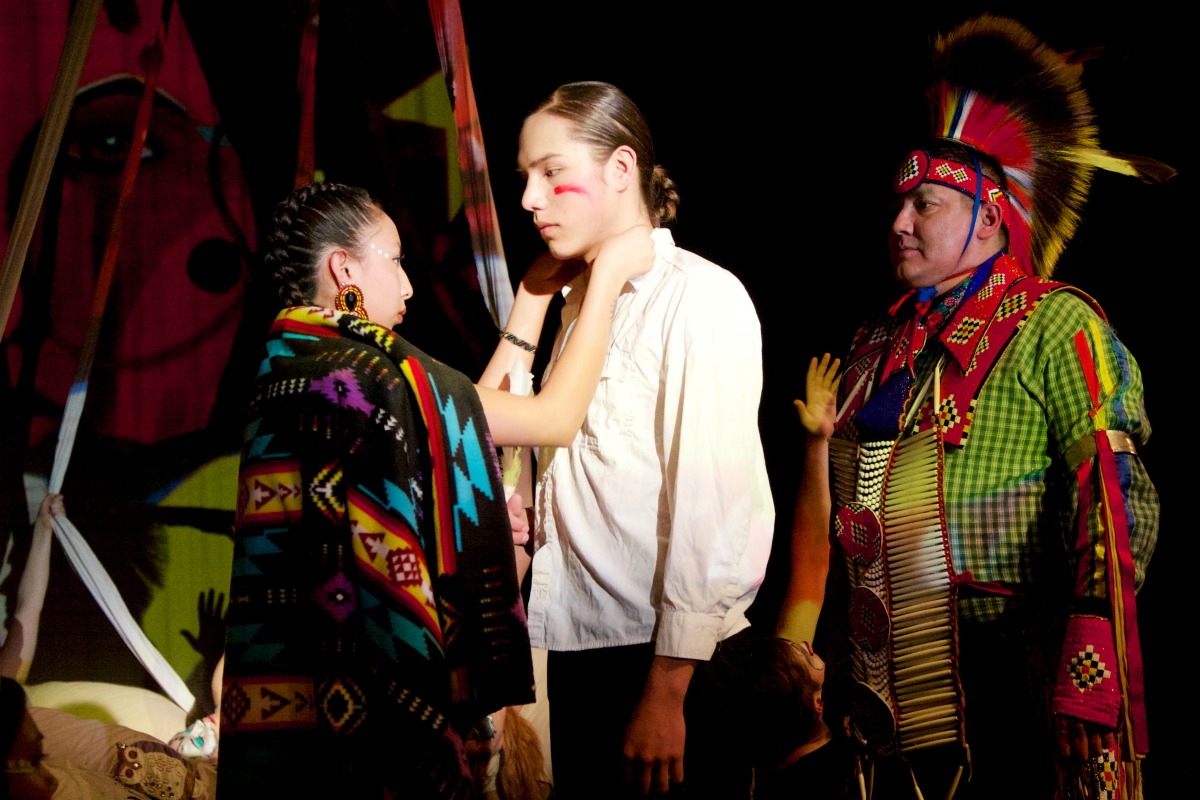Reconciliation—coming to terms with Canada’s colonial roots and making room for other stories and perspectives in understanding our shared history—is a daunting process to undertake for many Canadians. A graduate student in the University of Alberta’s Faculty of Education is hoping that a unique dance performance by a group of Alberta high school students might inspire audiences to see reconciliation in a new way.
For the past three years, master’s student Sara Solvey has been part of the teaching team that delivers EDU 211: Aboriginal Contexts in Education, a mandatory course for all undergraduate students in the Faculty of Education. She has seen students struggle to square the reality of colonial history and its lingering effects on Indigenous peoples with their own perceptions of Canada.
RELATED: Teaching a new story of Indigenous experience
“Students are confronted with histories, perspectives, experiences and knowledge systems that are quite different than what they thought they knew. This can lead to feelings of hopelessness and even confusion about what to do next,” Solvey says of the course.
Many paths to reconciliation
Solvey was visiting her hometown of Calgary in 2015 when she caught a performance of New Blood, a theatrical work that incorporates poetry, traditional Blackfoot music and dance, contemporary dance and the music of Peter Gabriel to tell the story of Vincent Yellow Old Woman, a residential school survivor who became the chief of the Siksika Nation. The show was created by students at Strathmore High School in southern Alberta, and Solvey recognized in it an opportunity to initiate a new conversation about reconciliation with EDU 211 students.
“In EDU 211, the teaching team asks us to attend to the stories that we tell and to consider how we might tell them differently as a way to action. I think New Blood exemplifies that action. They tackle the tough issues of our colonial history, and they do it in a collaborative way,” Solvey says. “It’s a real collaboration of students from diverse backgrounds, and I think they offer our students a way to proceed in a creative way, and they demonstrate there isn’t just one way to do reconciliation, there isn’t just one way to do decolonization.”
Thanks to Solvey’s efforts the production is coming to Edmonton, and more than 60 undergraduate students currently enrolled in EDU 211 will see New Blood as part of the experiential requirement for the course. The general public is invited to see the show on Tuesday, March 7 at 7 p.m. at the Timms Centre for the Arts on UAlberta’s North Campus (tickets can be purchased online through Eventbrite).
Renewing relations through art
Deanne Bertsch, the teacher at Strathmore High School who created New Blood with her students, says the production grew out of her own desire to know more about Indigenous history and to provide her students with a meaningful way to engage with reconciliation.
“The amazing thing about this show is that it’s brought greater understanding to our non-First Nations students and created relationships that weren’t there before,” Bertsch says. “A lot of the First Nations students have said how grateful they are that the non-First Nations students feel this story is important enough to tell. And the non-First Nations students say they have a great awareness and understanding around First Nations issues and history.”
Since premiering in 2015, New Blood has been performed almost 70 times all over Alberta. Bertsch says she and her troupe of 30 students are excited to bring the production to Edmonton for the first time and to be performing before an audience of pre-service educators.
“New Blood is a good example of what can happen for teachers in schools and how you can do something for reconciliation projects with your students,” Bertsch says.
While New Blood serves to provoke conversations about reconciliation, Solvey emphasizes that it is also a beautiful piece of theatre in its own right.
“It is very multifaceted, very colourful. You don’t have time to breathe through the whole performance,” says Solvey. “It’s really amazing that high school students have created something this accomplished.”
Feature image: New Blood blends traditional Blackfoot music and the music of Peter Gabriel to create a multifaceted piece of theatre about survival, resilience and reconciliation. Photo credit: Deanne Bertsch.
For almost as long as there's been a Canada, there's been a University of Alberta. Over the next year, in honour of Canada's 150th anniversary, we're proudly celebrating the people, achievements and ideas that contributed to the making of a confederation.
